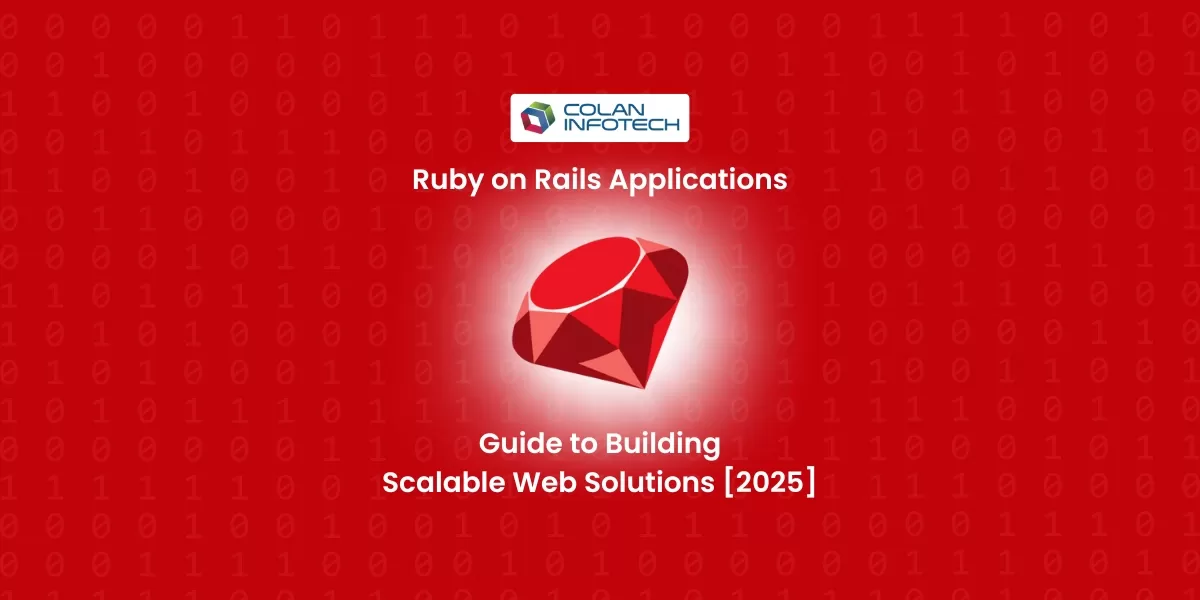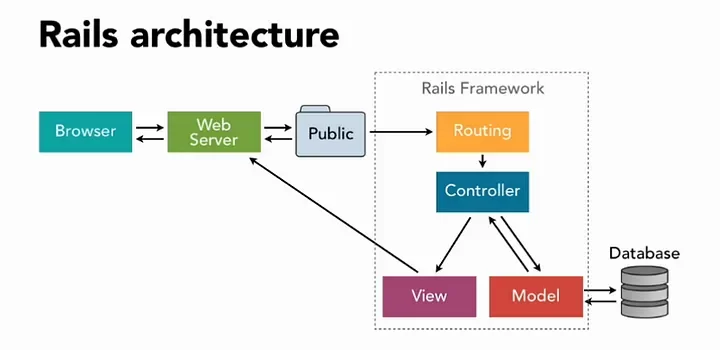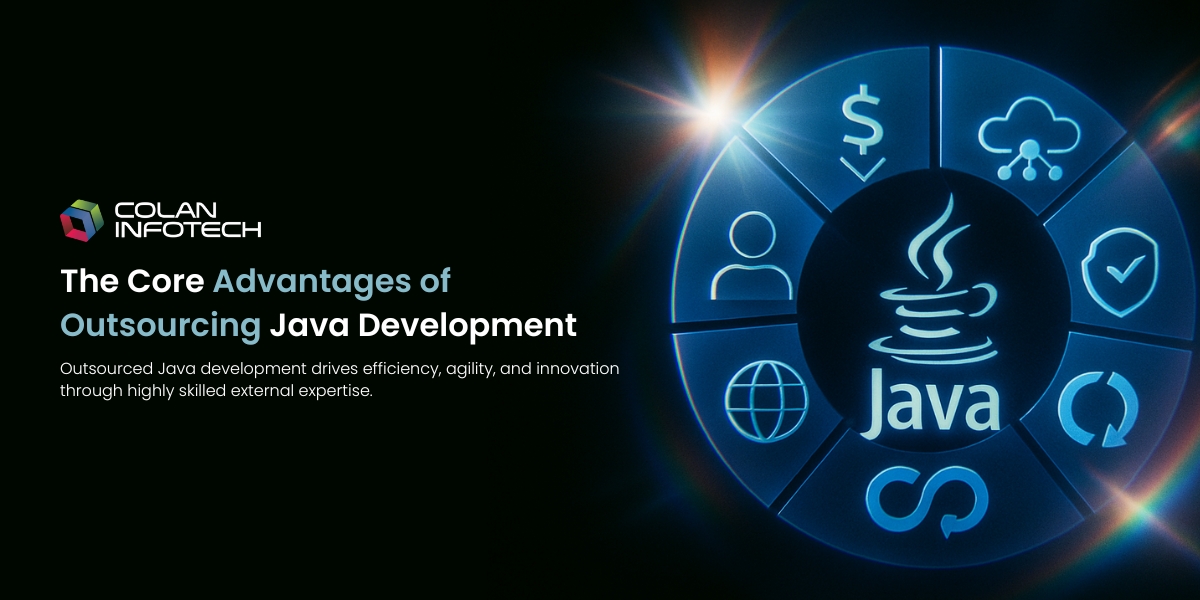Ruby on Rails Applications: Guide to Building Scalable Web Solutions [2025]

4 min read | By Admin | 27 May 2025 |
More than 577,000 live sites run Ruby on Rails, with more than 3 million active users.
Source: Trends
In 2025, businesses and startups are still focused on creating scalable web apps, and Ruby on Rails is still a popular and effective framework. Familiar for its syntax, robust developer community and included scalability features, Rails has the right mix of fast development and maintainability over a very long-term.
This guide delves into hands-on strategies, architectural designs and best practices to assist developers and development teams in building strong, high-quality Rails applications that can scale effortlessly along with user growth.

Source: Medium
Why Ruby on Rails Relevant in 2025
Ruby on Rails is still in pace in 2025 due to its simplicity, strong community, and ability to support rapid, scalable web development. Its stable environment and constant updates make it a safe choice to ruby on rails for startups and established businesses that want to develop efficient digital solutions.
Rapid Development:
Rails generator and scaffolding speed the creation of typical functionality.
Ecosystem:
An enormous library of gems adds to the capabilities of Rails, allowing integration with a wide range of services and tools.
Active Community
An active community ensures constant improvement, assistance and sufficiency of documentation for developers.
Ruby on Rails: How It Works?
Rails is a web application development framework built on the Ruby programming language. Below are the steps, how it works
MVC Structure:
Ruby on Rails architecture uses the Model-View-Controller structure. This model has a responsible for dealing with database records, the View is responsible for what the user will see and the Controller binds the two of them by the user input and output.
Request Process:
When a user makes a request, Rails sends it to the right controller and action. The controller then talks to the model to get the needed data and sends back a response using a view.
Active Record:
This is Rails’ native Object Relational Mapping system. It enables developers to write clean Ruby code to manage database queries and relationships instead of coding SQL.
Convention Over Configuration:
Rails prefers a common naming convention and structure, such that developers don’t need to code much setup. Development is faster and less error-prone.
DRY Principle:
Ruby on Rails promotes reusable code and the common logic is encapsulated in modules or helpers, leaving the app maintainable.
Routing System:
Rails routes URLs to the appropriate sections of the app via its routing file and that leads how users engage with the app.
Integrated Utilities:
Rails provides beneficial utilities for testing, form handling, security, session management and asset pipelines, which make full-stack development faster and deterministic
What Can be built with Ruby on Rails?
The Ruby on Rails framework is popular across multiple industries because of its adaptability and ability to accelerate development
Online Store
Ruby on Rails is a perfect for building customized online retailing solutions. It includes modules to manage inventory, transactions and user authentication processes. Such platforms as Shopify are popular implementations that prove RoR’s worth in the context of e-commerce.
SaaS Application
The system is scalable for intricate user flows, big data handling and integration with third-party APIs, which makes it perfect for SaaS development. Ruby on Rails supports the development of SaaS products that are scalable and future-proof. Famous applications such as GitHub, Zendesk, and UserVoice are all powered by Rails.
Content Management Tool
RoR is apt for creating CMS tools that are flexible in conjunction with being simple to use. Though WordPress, Drupal and HubSpot rule the CMS arena, Ruby on Rails provides the liberty to design your own system based on business requirements.
Social Media Website
RoR’s integrated mechanisms for handling user accounts, feeds and interactions provide a great platform for social networking sites. With Rails, one can implement feature-based communities like Friendster, MySpace, or Facebook using tools such as RailsSpace.
Strategies for Building Ruby on Rails Applications
Scalable Ruby on Rails application development depends on thoughtful design and performance-favorable practices. Clean architecture, smart database usage and tools like background jobs and caching help apps handle growth.
1. Modular Architecture
Taking a modular design improves scalability and maintainability. By breaking code into engines or service objects, programmers are better positioned to isolate functionalities so that components of the app are easier to manage.
2. Improving Database Performance
Database performance is important to scalability. Implementing proper indexing, removing N+1 queries and using tools like Bullet to find areas of inefficiency can greatly improve performance.
3. Background Job Processing
By delegating time-consuming chores to background jobs, it stops blocking the main application thread. Tools such as Sidekiq, which use Redis, provide for effective background processing so that the application continues to stay responsive under intensive loads.
4. Caching techniques
Database loading is minimized, and response rates improved, through caching solutions. The caching, Russian doll caching and low-level caching with built in functionality with Rails can change the game.
5. API-First Development
API-first design of applications is simple to implement with multiple clients, including mobile apps and third-party services. Ruby on rails ease of scaling to create RESTful APIs, along with libraries like ActiveModel Serializers, makes it easy to build scalable and efficient APIs.
6. Containerization and Orchestration
Using Docker the act of containerizing applications provides a consistency across development, testing and production environments. Using Kubernetes orchestrate those containers allows scaling, deploying and managing components of an application to be automated.
7. Continuous Integration and Deployment (CI/CD)
By automating testing and deployment procedures, CI/CD pipelines make sure that new code changes are included consistently and seamlessly. Tools such as GitHub Actions or GitLab CI/CD can enable automated testing, code quality checks and deployment workflows.
8. Monitoring and Logging
Detecting performance bottlenecks and guaranteeing the health of applications need proactive monitoring and logging. By integrating technologies like New Relic, Datadog, or Logstash, one can gain insight into the performance of an application and facilitate quick debugging.
What are the popular applications built with Rails?
The popular applications built with Ruby on Rails are GitHub, a widely used code hosting platform; Shopify, a leading e-commerce solution; and Basecamp, a project management tool.
Ruby on Rails best practices for Development
Ruby on Rails web development becomes more maintainable when guided by proven best practices. These practices help developers write cleaner code, avoid common pitfalls and build scalable applications.
Code Quality:
Preserve excellent code quality by conducting frequent code reviews, following coding guidelines, and conducting thorough testing.
Security:
Put into practice security best practices, such as authorization, authentication, and input validation, to guard against common vulnerabilities.
Documentation:
Maintain thorough documentation of the codebase, APIs and system architecture to facilitate onboarding and maintenance.
Performance Testing:
Regularly conduct the ruby on rails performance by testing to identify and address potential scalability issues before they impact users.
Wrapping Up
Creating scalable Ruby on Rails online applications in 2025 for a combination of modern deployment and monitoring technologies, efficient coding methods, and architectural approaches. Developers may make their apps growth-ready and able to adapt to changing user needs by using these strategies and best practices.
The latest from our editors
Join over 150,000+ subscribers who get our best digital insights, strategies and tips delivered straight to their inbox.


